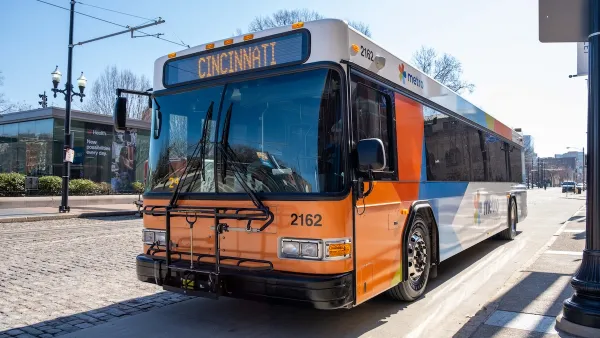Fewer kids are walking to school these days. This piece from the American Society of Landscape Architects' Land Online wonders what landscape architects can do to reverse the trend.
"Granted, it's more risky for today's kids to walk than it was for me and my generation, and many parents don't favor their kids walking. Some of the reasons have to do with the physical structure of the suburbs where most American families live. Many of the newer 'burbs don't have sidewalks, and road crossings are wider and traffic faster than they used to be. Then there is the fear lodged at the back of every parent's mind that his or her child could be snatched up by a predator."
"Solutions do exist. One organization, Safe Routes to School (www.saferoutesinfo.org), has developed a structured program to show communities how to plan and build safe routes to school (or identify and map existing routes), encourage kids to travel in groups, and train them to avoid strangers. Federal transportation legislation devoted $612 million for the National Safe Routes to School Program from 2005 through 2009. With these institutions and incentives, what are landscape architects doing to implement Safe Routes to School and similar initiatives in school districts where walking is feasible?"
FULL STORY: Land Matters

Planetizen Federal Action Tracker
A weekly monitor of how Trump’s orders and actions are impacting planners and planning in America.

Map: Where Senate Republicans Want to Sell Your Public Lands
For public land advocates, the Senate Republicans’ proposal to sell millions of acres of public land in the West is “the biggest fight of their careers.”

Restaurant Patios Were a Pandemic Win — Why Were They so Hard to Keep?
Social distancing requirements and changes in travel patterns prompted cities to pilot new uses for street and sidewalk space. Then it got complicated.

Platform Pilsner: Vancouver Transit Agency Releases... a Beer?
TransLink will receive a portion of every sale of the four-pack.

Toronto Weighs Cheaper Transit, Parking Hikes for Major Events
Special event rates would take effect during large festivals, sports games and concerts to ‘discourage driving, manage congestion and free up space for transit.”

Berlin to Consider Car-Free Zone Larger Than Manhattan
The area bound by the 22-mile Ringbahn would still allow 12 uses of a private automobile per year per person, and several other exemptions.
Urban Design for Planners 1: Software Tools
This six-course series explores essential urban design concepts using open source software and equips planners with the tools they need to participate fully in the urban design process.
Planning for Universal Design
Learn the tools for implementing Universal Design in planning regulations.
Heyer Gruel & Associates PA
JM Goldson LLC
Custer County Colorado
City of Camden Redevelopment Agency
City of Astoria
Transportation Research & Education Center (TREC) at Portland State University
Camden Redevelopment Agency
City of Claremont
Municipality of Princeton (NJ)




























